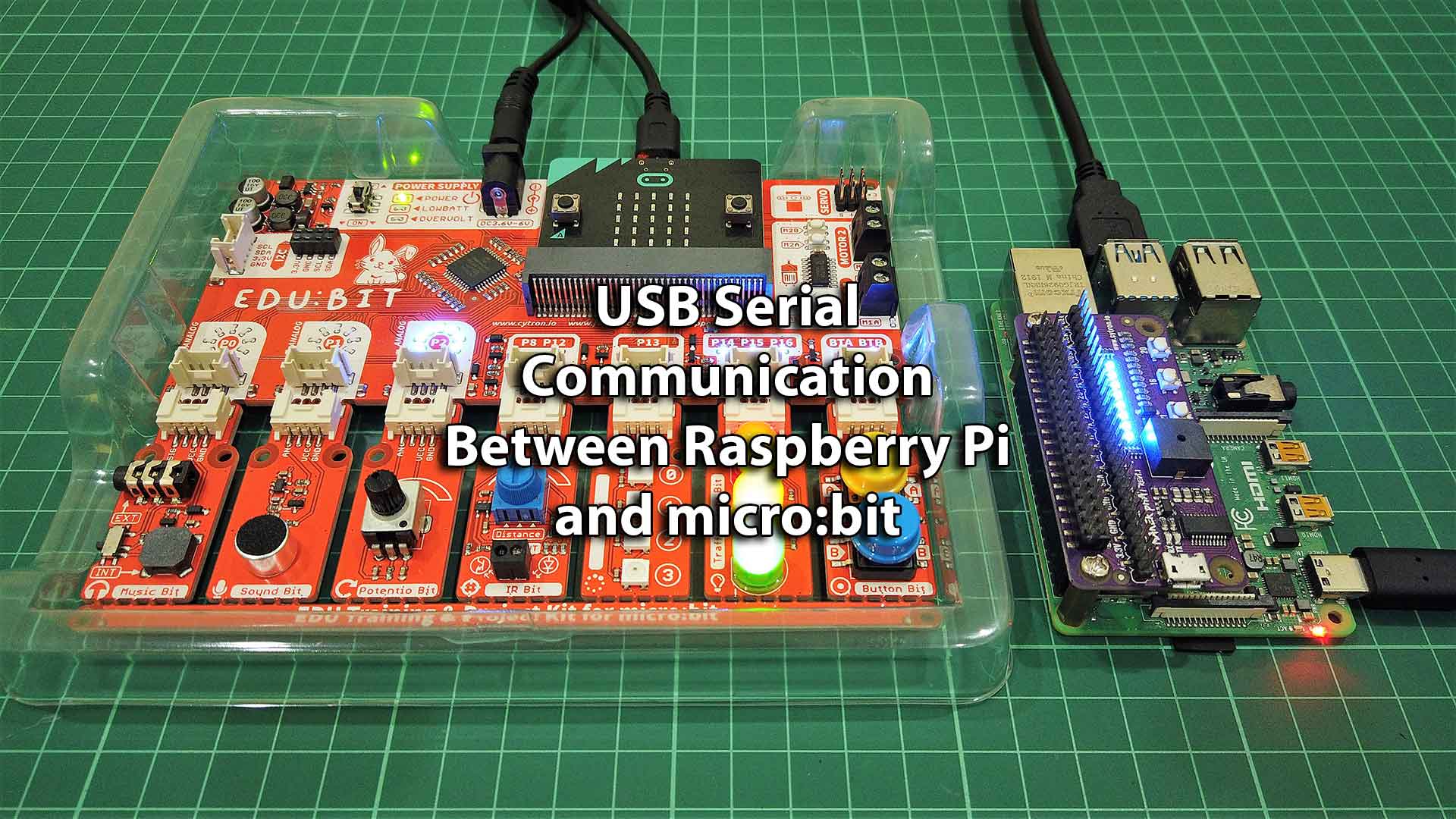Your shopping cart is empty!

USB Serial Communication Using Raspberry Pi and Microbit
- Idris Zainal Abidin
- 05 Aug 2020
- 829
Introduction
To expand controller capability, sometimes it is necessary to communicate with other controllers. There have few common protocols in controller communication e.g. UART, I2C, SPI and etc. This tutorial will share on how to do the UART serial communication between Raspberry Pi and micro:bit through USB connection.
Video
This video shows how to do serial communication between Raspberry Pi and micro:bit over a USB connection.
Hardware Preparation
This is the list of items used in the video.
- Raspberry Pi 4 Model B (2GB)
- Raspberry Pi 4 Model B (4GB)
- Raspberry Pi 4 Model B (8GB)
- 16GB Micro SD Card
- Maker pHAT
- EDU:BIT Training & Project Kit for micro:bit
Sample Program
This is python sample program for micro:bit (top) and Raspberry Pi (bottom). You can use mu editor to program micro:bit and Thonny Python IDE to run program in Raspberry Pi.
Thank You
References:
Thanks for reading this tutorial. If you have any technical inquiries, please post at Cytron Technical Forum.
"Please be reminded, this tutorial is prepared for you to try and learn.
You are encouraged to improve the code for a better application."
 International
International Singapore
Singapore Malaysia
Malaysia Thailand
Thailand Vietnam
Vietnam